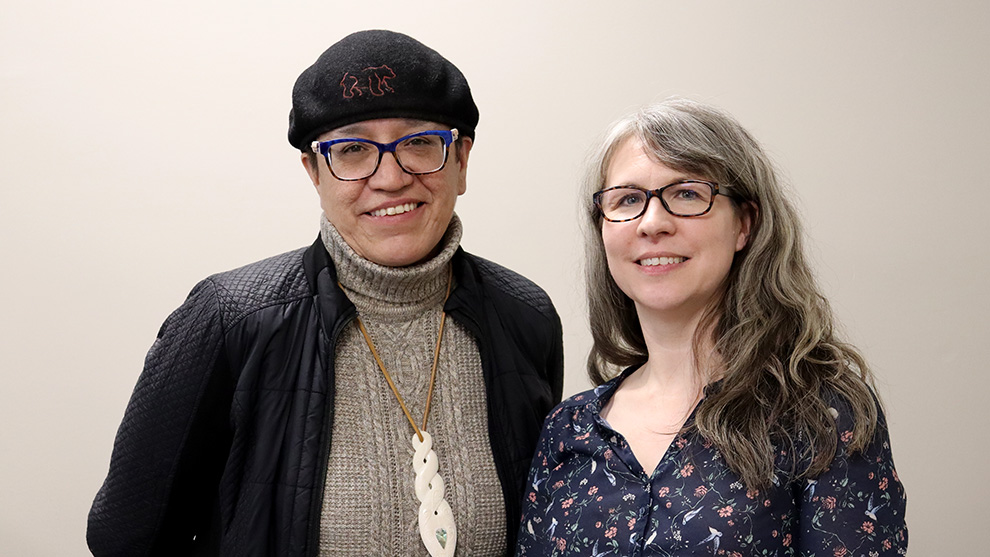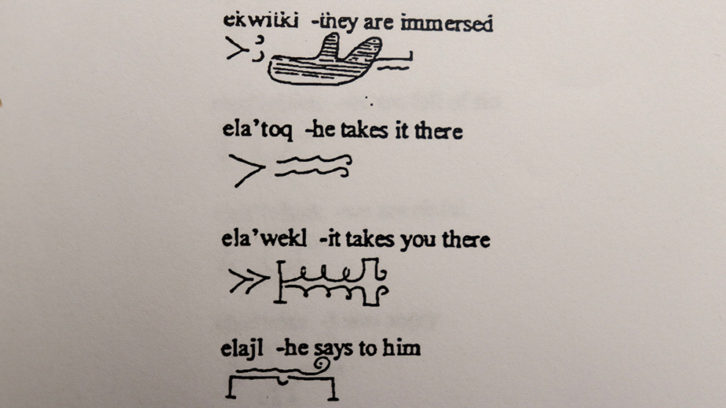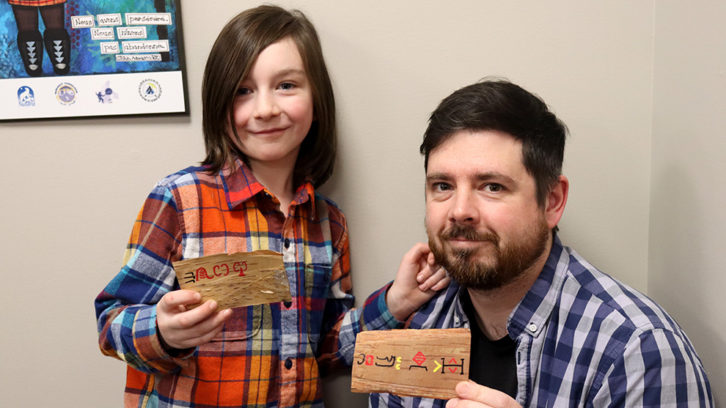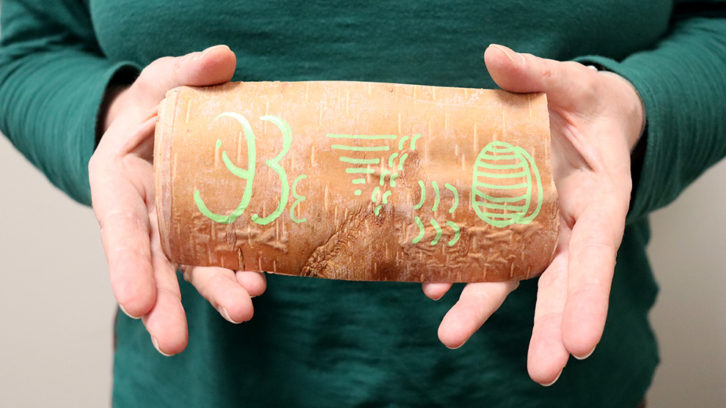Poet reclaiming written Mi’kmaq language visits Halifax
Michelle Sylliboy’s poetry collection and birch bark workshop brings Mi’kmaq hieroglyphic characters to life

caption
Mi'kmaq poet and artist, Michelle Sylliboy, and Dal Reads chairperson Marlo MacKay.Cape Breton-based Mi’kmaq poet and artist Michelle Sylliboy was in Halifax this week to talk about her book Kiskajeyi – I Am Ready — a collection of Mi’kmaq hieroglyphic poetry, modern poetry and photography.
Sylliboy’s poetry and artistic practice focuses on reclaiming her original written komqwejwi’kasikl (hieroglyphic) language. She said that before colonization, her language’s hieroglyphic symbols were inscribed throughout the landscape in Mi’kmaq districts.
“If you go to Kejimkujik, they’re [the hieroglyphs] etched in the stone,” Sylliboy said in an interview.
“People would use it as a way of writing, communicating, and teaching others. So it’s a form of communication, the way you write and spell. Parchments were used to send messages.”
Dalhousie University invited Sylliboy to honour this year’s Dal Reads’ selection, Song of Rita Joe: Autobiography of a Mi’kmaq Poet. Dal Reads, a campus-wide reading initiative, was launched in 2009. Every year, the program chooses one book and encourages the campus community to read it.
“One of the things we try to do is create a common intellectual experience by sharing a book among the students,” said Marlo MacKay, communications co-ordinator of Dalhousie Libraries and chairperson of Dal Reads.
In the past, Dal Reads has always included the author of each selected book in their programming. But since the author of this year’s selection, Rita Joe, died in 2007, MacKay said they needed to think creatively about who to select as a speaker.
MacKay believes Dal Reads ended up finding the perfect fit in Sylliboy.
“Michelle Sylliboy has a few things in common with Rita Joe. They’re both from Cape Breton, they’re both poets, they’re both Mi’kmaq women,” MacKay said. “And the work that Michelle is doing also with Mi’kmaq hieroglyphics and writing, the writing that she’s doing and writing her poetry, from reading Rita Joe’s autobiography, I think she would be delighted.”

caption
A glimpse of the Mi’kmaq komqwejwi’kasikl (hieroglyphic) language.During her artist’s talk on Wednesday evening, Sylliboy recalled an encounter she had with Rita Joe 20 years ago. The pair happened to meet in Vancouver. When Sylliboy told Joe that she was also a poet, she recalled how Joe replied by saying, “Hurry up and get published. I’m tired.”
Joe was a strong advocate for other Indigenous writers. In Song of Rita Joe, she wrote that her “greatest wish is that there will be more writing from my people, and that our children will read it. I have said again and again that our history would be different if it had been expressed by us.”
Kiskajeyi – I Am Ready was published in March 2019. During her talk, Sylliboy said she always knew the first book she published would be written in her language.
An array of themes are touched on throughout the collection.
“I reference and write about history and world events. And also love,” Sylliboy said.
“Relationships to nature and humanity, and the way resource extraction is impacting our environment. That was very important for me, to write about that, and the impact colonization has had on our people across Canada.”
The hieroglyphs Sylliboy employs in her poetry were published in Catholic prayers in the 17th century. A dictionary has been assembled based on these prayers, containing about 8,500 Mi’kmaq komqwej’wikasikl hieroglyphs.
Sylliboy used this dictionary for a birch bark workshop she delivered at the Dalhousie campus on Thursday. Participants were invited to read through the dictionary and compose messages using the hieroglyphs. They then recorded their messages on slips of birch bark.

caption
Miles and Nick Wilkinson holding their birch bark hieroglyphic messages.

caption
Karen White shows her birch bark hieroglyphic message, which means “I dreamt of everything coming together on earth.”Sylliboy has offered many similar workshops in hopes of making her language accessible and meaningful to others. She is also developing a curriculum based on the hieroglyphs in her education PhD program at Simon Fraser University in Vancouver.
“I got a sense that people were thirsty for the knowledge,” she said.
To create this curriculum, Sylliboy is also collaborating with community elders. Although many of those who understood the hieroglyphs have died, she says a handful of knowledge keepers remain. She is building on the efforts of other Mi’kmaq language revivalists, including Wilfred Prosper, a renowned Mi’kmaq fiddler, who also spread awareness of the hieroglyphs.
“Each generation did something to help people know about the language,” Sylliboy said.
About the author
Andrea McGuire
Andrea McGuire is a journalism student from Newfoundland. Before coming to King's College, she completed a master's degree in folklore at Memorial...
